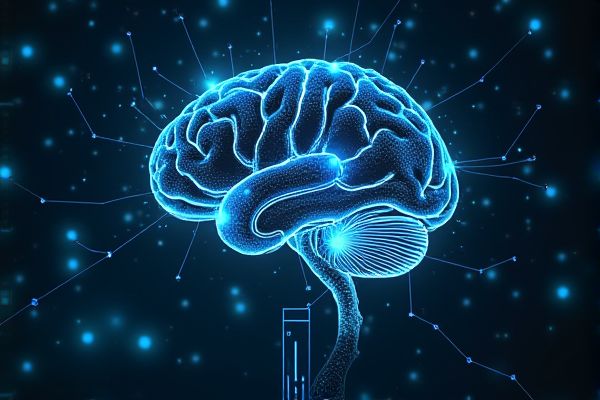
AI enhances neurotechnology by analyzing complex neural data, allowing for deeper insights into brain activity and its correlation with behavior. Machine learning algorithms can identify patterns in brain signals, leading to the development of personalized treatments for neurological disorders. Advanced brain-computer interfaces leverage AI to improve communication for individuals with motor disabilities, offering a means to control devices or engage with their environment. The integration of AI into neurotechnology not only streamlines research and diagnostics but also paves the way for innovative therapeutic interventions.
AI usage in neurotechnology
Brain-Computer Interfaces (BCIs)
AI can enhance the functionality of Brain-Computer Interfaces (BCIs) by improving signal interpretation and data analysis. This can lead to more accurate and responsive interaction between the user and devices, potentially aiding individuals with disabilities. Research from institutions like MIT shows promising advancements in real-time communication through these interfaces. The chance of leveraging AI for more intuitive control systems can significantly benefit users in daily tasks.
Neural Pattern Recognition
AI in neurotechnology can enhance neural pattern recognition, leading to improved diagnosis and treatment of neurological disorders. For instance, institutions like MIT are exploring AI algorithms to decode brain signals, potentially advancing brain-computer interfaces. This technology may increase the chances of achieving real-time communication for individuals with severe disabilities. The integration of AI could also optimize personalized neurostimulation therapies, offering significant advantages in patient care.
Neuroprosthetics
AI applications in neurotechnology, particularly in neuroprosthetics, present opportunities for enhancing patient outcomes. Machine learning algorithms can analyze neural signals to improve the functionality of prosthetic devices, allowing for more intuitive control. For instance, a neural interface developed at Stanford University could potentially allow amputees to regain finer motor skills through advanced signal processing. This integration of AI may increase the chances of restoring independence and quality of life for users.
Cognitive Enhancement
AI has the potential to revolutionize neurotechnology, fostering advancements in cognitive enhancement techniques. By analyzing vast datasets, AI algorithms can identify patterns that contribute to improved cognitive functions, such as memory and focus. Institutions like the Massachusetts Institute of Technology (MIT) are exploring these possibilities, harnessing AI to refine neurostimulation devices. This intersection of AI and neurotechnology may lead to personalized cognitive therapies, enhancing individual brain performance.
Neural Data Analysis
AI can enhance neural data analysis by improving the accuracy of brain signal interpretation. Techniques such as machine learning could identify patterns in neural data, potentially leading to advancements in understanding neurological disorders. For instance, employing AI in research at institutions like MIT may uncover new therapeutic approaches for conditions such as epilepsy. The application of AI in this field holds the promise of more efficient data processing and insights into brain functionality.
Algorithms for Brain Mapping
AI applications in neurotechnology can enhance the precision of brain mapping by analyzing complex neural data more efficiently. Algorithms such as deep learning models are increasingly used to identify patterns in brain activity, which can inform treatment options for neurological disorders. Institutions focused on neuroresearch may leverage these advancements to develop targeted therapies or personalized medicine approaches. The possibility of improving patient outcomes through innovative AI-driven techniques is significant in this evolving field.
Neurofeedback Applications
AI usage in neurotechnology can enhance neurofeedback applications by providing more accurate real-time analysis of brainwave data. This can lead to improved customization of treatment protocols for conditions like anxiety and ADHD, making therapies more effective. Institutions like the University of California, Los Angeles (UCLA) are exploring these innovative methods, which could significantly improve patient outcomes. The integration of AI may also streamline the data processing needed for neurofeedback, resulting in faster and more accessible treatments.
Neuromodulation Techniques
The integration of AI in neurotechnology can enhance the efficacy of neuromodulation techniques, such as transcranial magnetic stimulation (TMS). This could lead to personalized treatment protocols for conditions like depression or chronic pain, potentially improving patient outcomes. AI algorithms may analyze individual brain patterns to optimize stimulation parameters, increasing the likelihood of successful interventions. The use of machine learning in analyzing neuroimaging data also presents opportunities for refining therapeutic approaches in clinical settings.
Real-Time Neural Monitoring
AI has the potential to enhance neurotechnology by providing real-time neural monitoring capabilities. For instance, advanced algorithms can analyze neural data from devices used in clinical settings, allowing for timely interventions in conditions like epilepsy. This could lead to improved patient outcomes as healthcare providers gain insights into brain activity patterns. Moreover, institutions specializing in neuroscience research may benefit from AI-driven tools that streamline data analysis and interpretation.
Machine Learning in Neuroimaging
AI advancements in neurotechnology present opportunities for enhanced diagnostic accuracy and personalized treatment plans. Machine learning algorithms applied in neuroimaging can identify patterns in brain activity that may not be visible to human analysts. These technologies could lead to improved outcomes in conditions such as epilepsy or Alzheimer's disease. Institutions like MIT are exploring innovative applications, highlighting the potential benefits of integrating AI into neuroscience research.
 techknowy.com
techknowy.com